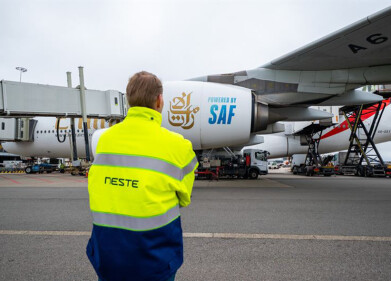Fuel for Thought
What Caused the 1973 Oil Crisis?
Mar 03 2016
In the early 70s, the oil industry encountered an earthquake of unimaginable scale. After the Organization of Arab Petroleum Exporting Countries (OAPEC) declared an oil embargo, the wind was knocked out of the global oil economy, triggering a price spike from US$3 to US$12. As a result, the price of petrol skyrocketed, making it ludicrously expensive to keep cars, trucks and other vehicles on the road.
Anger in the Arabian Peninsula
So what inspired Arabian nations to take down the oil industry singlehandedly? Put simply, Arabian oil producers imposed the embargo in a bid to boycott America, and punish the West for its support of Israel in the Yom Kippur war. Together, the Arab members of OPEC, as well as Egypt and Syria developed the scheme, and proclaimed the restrictions in 1973.
From a political perspective, the Yom Kippur War was particularly controversial. After Egypt and Syria executed a surprise military advancement to reclaim territories lost to Israel after the 1967 Six-Day War, the US stepped up and supplied the Israeli army with weapons. OAPEC saw this as a hostile move, which led them to announce an oil embargo against the US, Canada, the UK, Japan and the Netherlands.
Political conflict on a global scale
The backlash was immense, with international relations undergoing extreme stress. NATO was not exempt from the downfall, with Japan and European nations seeking to separate themselves from US foreign policy in the Middle East.
OAPEC flexes its metaphorical muscles
As the early 70s were a time of rapidly rising oil consumption, the embargo had a particularly dramatic effect. OAPEC members knew they had supreme power over global oil prices, and used this as a political and economic weapon against their adversaries. Overall, the embargo was a successful demonstration of both economic and diplomatic power within Saudi Arabia, and the influence its decisions had over Western nations.
Changing market conditions
While the 1970s saw the price of oil skyrocket, today cost per barrel is alarmingly low. The gas industry is also experiencing a massive global surplus, which has seen many lines reach full capacity. For more information on the current state of the oil and gas economy, ‘Capacity Allocation and Nominations’ is an insightful read. It looks at the emergence of capacity allocation in the wake of increased production, particularly in shale areas where there is insufficient infrastructure. This includes sites such as the Williston Basin, Eagle Ford, Marcellus and Utica. President of ONGT (Oil & Gas Training Corporation) Jane Williams is the author behind the article, drawing on her measurement training experience to explain the concept in an easy to understand manner.
Image via Flickr Creative Commons. Photo credits: Israel Defence Forces
Digital Edition
PIN 25.2 Apr/May
April 2024
In this Edition Safety - Carbon monoxide toxic and flammable gas detection Analytical Instrumentation - Density: A fundamental parameter at critical stages within the petroleum sector...
View all digital editions
Events
Canada Gas & LNG Exhibition & Conference
May 07 2024 Vancouver, BC, Canada
May 08 2024 Lahore, Pakistan
May 13 2024 New Orleans, LA, USA
May 14 2024 Tashkent, Uzbekistan
May 14 2024 Oklahoma City, OK, USA


















